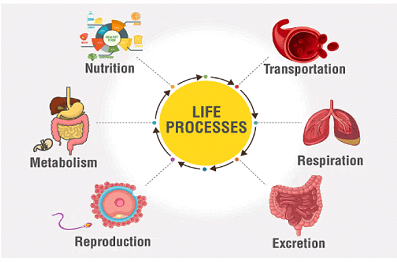Action of Salts on Metals
Understanding displacement reactions and their applications
Introduction
When a metal comes into contact with a salt solution, interesting chemical reactions can occur. These reactions are crucial for understanding metal reactivity and are common in exams. In this blog post, we’ll explore how different metals react with various salt solutions, understand the underlying principles, and examine practical examples.
Key concept for exams:
When a more reactive metal is placed in a solution of a less reactive metal’s salt, a displacement reaction occurs where the more reactive metal displaces the less reactive metal from its salt solution.
Displacement Reactions
A displacement reaction (also called a replacement reaction) is a chemical reaction where a more reactive element displaces a less reactive element from its compound. The general reaction between a metal and a salt solution can be represented as:
Metal A + Salt of Metal B → Salt of Metal A + Metal B
(Where Metal A is more reactive than Metal B)
Conditions for Displacement
A displacement reaction will only occur if the metal being introduced (Metal A) is more reactive than the metal in the salt solution (Metal B). This principle is directly linked to the reactivity series of metals.
Remember:
A more reactive metal will always displace a less reactive metal from its salt solution.
Examples of Salt Actions on Metals
1. Copper Sulfate and Zinc
When zinc metal is placed in blue copper sulfate solution:
Zn(s) + CuSO4(aq) → ZnSO4(aq) + Cu(s)
Observations: The blue color of copper sulfate solution fades gradually, and a reddish-brown deposit of copper metal forms on the zinc. The zinc gradually dissolves.
Explanation: Zinc is more reactive than copper, so it displaces copper from copper sulfate solution, forming zinc sulfate and copper metal.
2. Silver Nitrate and Copper
When copper metal is placed in silver nitrate solution:
Cu(s) + 2AgNO3(aq) → Cu(NO3)2(aq) + 2Ag(s)
Observations: Silver crystals form on the copper surface, and the solution gradually turns blue (due to copper(II) nitrate formation).
Explanation: Copper is more reactive than silver, so it displaces silver from silver nitrate solution.
3. Iron Sulfate and Magnesium
When magnesium ribbon is placed in iron(II) sulfate solution:
Mg(s) + FeSO4(aq) → MgSO4(aq) + Fe(s)
Observations: The magnesium gradually dissolves, and iron particles precipitate out of the solution.
Explanation: Magnesium is more reactive than iron, so it displaces iron from iron(II) sulfate solution.
4. No Reaction Examples
When copper is placed in magnesium sulfate solution:
Cu(s) + MgSO4(aq) → No reaction
Observations: No visible change occurs.
Explanation: Copper is less reactive than magnesium, so it cannot displace magnesium from magnesium sulfate solution.
Tabular Representation of Reactions
| Metal | Salt Solution | Reaction | Observation |
|---|---|---|---|
| Zinc (Zn) | Copper sulfate (CuSO4) | Displacement occurs | Blue color fades, reddish-brown copper deposits |
| Iron (Fe) | Copper sulfate (CuSO4) | Displacement occurs | Blue color fades, reddish-brown copper deposits |
| Copper (Cu) | Zinc sulfate (ZnSO4) | No reaction | No change observed |
| Magnesium (Mg) | Zinc chloride (ZnCl2) | Displacement occurs | Magnesium dissolves, zinc precipitates |
| Silver (Ag) | Copper nitrate (Cu(NO3)2) | No reaction | No change observed |
| Copper (Cu) | Silver nitrate (AgNO3) | Displacement occurs | Silver crystals form, solution turns blue |
Factors Affecting Metal-Salt Reactions
1. Reactivity of Metals
The primary factor determining whether a reaction will occur is the relative positions of the metals in the reactivity series.
2. Concentration of Salt Solution
Higher concentrations generally lead to faster reactions due to increased collision frequency between particles.
3. Temperature
Higher temperatures increase the rate of reaction by providing particles with more kinetic energy.
4. Surface Area of Metal
A larger surface area (e.g., powder vs. sheet) provides more contact points for the reaction to occur.
Practical Applications
1. Extraction of Metals
The concept of displacement reactions is used in extracting less reactive metals from their compounds using more reactive metals.
2. Electroplating
The principles behind metal-salt reactions are applied in electroplating, where a thin layer of a more expensive metal (like silver) is deposited on a cheaper metal.
3. Metallurgy
Knowledge of these reactions helps in selecting appropriate methods for metal purification and extraction in metallurgical processes.
Exam Focus: Common Questions
Question 1: Predict the outcome when iron nail is placed in copper sulfate solution.
Expected Answer: The iron nail will displace copper from copper sulfate solution because iron is more reactive than copper. The reaction will be:
Fe(s) + CuSO4(aq) → FeSO4(aq) + Cu(s)
The blue color of copper sulfate solution will fade, and a reddish-brown deposit of copper will form on the iron nail.
Question 2: Will a reaction occur when copper wire is placed in zinc sulfate solution? Explain.
Expected Answer: No reaction will occur because copper is less reactive than zinc. Copper cannot displace zinc from zinc sulfate solution.
Question 3: When magnesium ribbon is dropped into silver nitrate solution, what observations would you expect?
Expected Answer: Magnesium will displace silver from silver nitrate solution because magnesium is more reactive than silver. The reaction will be:
Mg(s) + 2AgNO3(aq) → Mg(NO3)2(aq) + 2Ag(s)
The magnesium ribbon will gradually dissolve, and silver will precipitate as a gray solid.
Summary
Key Points to Remember
- A more reactive metal will displace a less reactive metal from its salt solution.
- No reaction occurs when a less reactive metal is placed in a solution of a more reactive metal’s salt.
- The reactivity series of metals determines whether a displacement reaction will occur.
- Common observations include color changes in solutions and deposition of the displaced metal.
- These reactions are single displacement reactions, where one element replaces another in a compound.
Understanding the action of salts on metals is essential for comprehending many chemical processes, including metal extraction, electrochemical cells, and corrosion.



